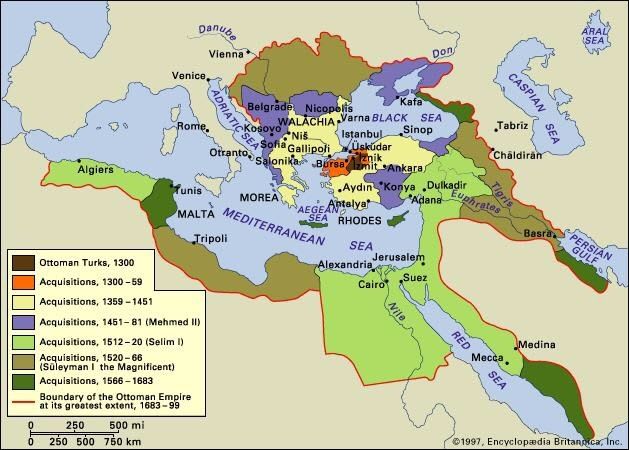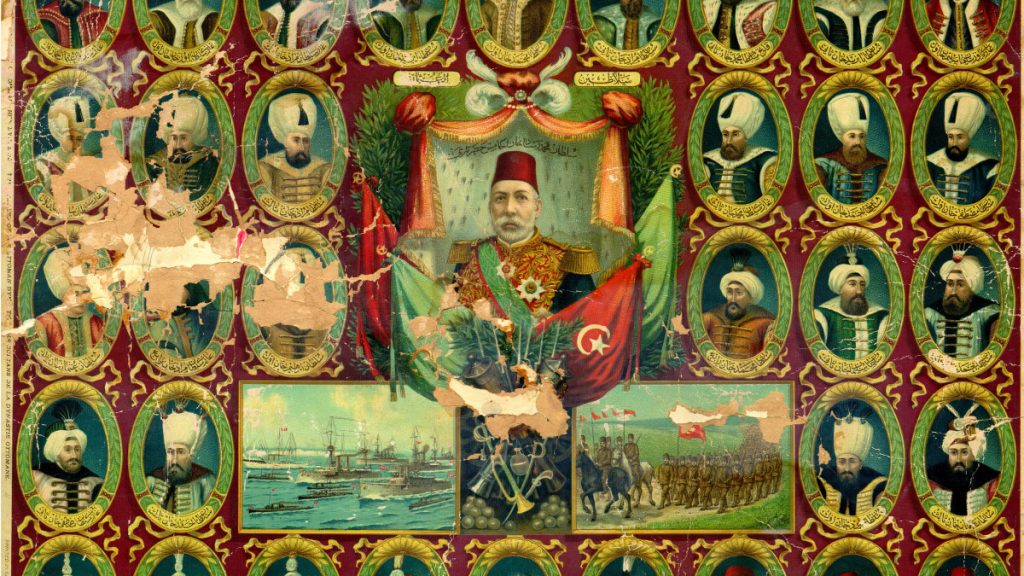Have you ever wondered how the Ottoman Empire stayed powerful for so many centuries? It wasn’t just luck or chance.
The empire used smart strategies that kept its control strong and its people united. If you want to discover the secrets behind their lasting power, this article will guide you through the key factors that made the Ottoman Empire a force to be reckoned with.
Keep reading—you’ll be surprised by how these old tactics can still teach us a lot today.
Centralized Governance
The Ottoman Empire stayed strong through a system called centralized governance. This system helped control the vast lands and many people under one rule. It made sure that orders came from the top and were followed across the empire. Centralized governance created order and kept the empire united.
Role Of The Sultan
The Sultan was the supreme ruler and held all power. He made important decisions about war, peace, and laws. People saw him as both a political and religious leader. His authority was respected across the empire. The Sultan’s word was law, and his leadership kept the empire stable.
Administrative Structure
The empire had a clear administrative system to manage its lands. It was divided into provinces called “eyalets.” Each eyalet was run by a governor called a “beylerbey.” These governors collected taxes and kept order. Local leaders reported directly to the central government. This structure helped the empire control distant regions efficiently.
Use Of Viziers And Advisors
The Sultan relied on trusted viziers and advisors for guidance. The Grand Vizier was the chief advisor and head of the government. He led the imperial council and helped make decisions. Other advisors managed specific areas like finance and military. This team worked closely with the Sultan to run the empire smoothly.

Credit: owlcation.com
Military Strength
The Ottoman Empire’s military strength was a crucial factor in maintaining its vast and diverse territories for centuries. Their forces were not only well-trained but also highly organized, adapting continuously to changing warfare techniques. Understanding their military system reveals how they stayed ahead of rivals and secured their power.
Janissaries And Elite Troops
The Janissaries were the backbone of the Ottoman military. These elite infantry soldiers were originally recruited through the devshirme system, where young Christian boys were trained to serve the empire with unwavering loyalty. Their discipline, training, and advanced weapon skills made them a formidable force on the battlefield.
Besides the Janissaries, the Ottomans also had specialized cavalry units called Sipahi, who acted as the empire’s heavy cavalry. Together, these troops formed a strong, versatile army capable of both siege warfare and fast raids. How might your own strategies benefit from blending loyalty with specialized skills?
Innovations In Warfare
The Ottomans were among the first to adopt gunpowder weapons, which gave them a significant advantage. They used large cannons effectively during sieges, such as the famous fall of Constantinople in 1453. This innovation changed how wars were fought and allowed the Ottomans to capture heavily fortified cities.
They constantly improved their military technology and tactics. For example, they developed mobile artillery units that could be quickly repositioned during battles. This flexibility often caught enemies off guard and shifted the momentum in their favor.
Naval Power
The Ottoman navy was essential for controlling key trade routes and protecting their coastal territories. Their fleet expanded rapidly, allowing them to dominate the Mediterranean Sea. This naval strength helped secure supply lines and project power far beyond their land borders.
Ottoman sailors were skilled navigators and fierce fighters. They built advanced warships like galleys equipped with cannons, which were effective against rival navies. How important is controlling the seas for maintaining power in your own field?
Legal And Religious Systems
The Ottoman Empire kept control by blending legal rules with religious laws. This system helped manage diverse peoples and kept order across vast lands. Religious leaders worked with rulers to enforce laws and support the empire’s power.
The Ottoman Empire’s ability to maintain power for over six centuries is attributed significantly to its robust legal and religious systems. These systems acted as the backbone of governance, offering a blend of tradition and innovation. They ensured stability and continuity in a diverse empire, where various cultures and religions coexisted.Sharia And Secular Laws
The Ottomans implemented a dual legal system combining both Sharia (Islamic law) and secular laws. This approach allowed for flexibility and adaptability in governance. Sharia governed personal and family matters, while secular laws, often based on the sultan’s decrees, managed public and state affairs. This duality ensured that all citizens, regardless of religion, had a clear legal framework to abide by, creating a sense of order and predictability.Religious Tolerance
Religious tolerance was a hallmark of Ottoman rule. The millet system allowed different religious communities to govern themselves under their own laws. This autonomy fostered loyalty and reduced the potential for religious conflict. It’s worth pondering—how might today’s societies benefit from such a model of coexistence?Role Of The Ulema
The Ulema, a body of Islamic scholars, played a crucial role in maintaining the empire’s religious and legal integrity. They were responsible for interpreting Sharia and advising the sultan on religious matters. Their influence extended to education and social welfare, ensuring that Islamic principles were integrated into daily life. This connection between religion and governance provided a moral compass for the empire, guiding both rulers and citizens in their daily interactions. In your own life, how do you balance tradition with change? The Ottomans’ blend of Sharia and secular laws offers a historical example of such balance, showing that respect for tradition can coexist with the need for innovation.Economic Strategies
The Ottoman Empire’s economic strength was a key reason it held power for centuries. Its leaders crafted smart strategies that not only kept the economy stable but also fueled expansion and control. Understanding these economic moves helps you see how they managed resources and influence effectively.
Control Of Trade Routes
The empire’s location gave it control over major trade routes connecting Europe, Asia, and Africa. This control allowed the Ottomans to regulate and tax goods passing through, boosting their treasury significantly.
They didn’t just rely on geography; they invested in infrastructure like roads and caravanserais to support merchants. This made trading safer and more efficient, encouraging more commerce under Ottoman protection.
Imagine owning a key highway today and charging a toll that funds your city’s growth. That’s similar to what the Ottomans did with trade routes.
Taxation Policies
The Ottoman tax system was complex but efficient, designed to gather revenue without stifling economic activity. Taxes were often based on land productivity and trade profits, ensuring fairness in collection.
They also implemented tax farming, where individuals collected taxes in exchange for a fee to the state. This kept the system organized and reduced corruption, which can be a major problem in tax collection.
Think about how you pay for services based on use or income—that principle helped maintain balance and encouraged economic participation.
Agricultural Management
Agriculture was the backbone of the Ottoman economy. They managed farmlands through the timar system, assigning land to soldiers in return for military service, which ensured land productivity and loyalty.
The empire also promoted irrigation projects and crop diversity to increase yields and protect food supplies. This not only fed the population but supported trade in agricultural products.
Have you ever considered how managing land wisely can impact a whole economy? The Ottomans show how direct control and incentives can lead to sustainable growth.
Cultural Integration
The Ottoman Empire thrived for centuries through strong cultural integration. It united many ethnic groups, religions, and traditions under one rule. This blend created a rich society that valued diversity and cooperation. The empire’s success depended on respecting and including different cultures. It allowed people to keep their customs while being part of the larger Ottoman world.
Multicultural Society
The empire was home to Turks, Arabs, Greeks, Armenians, and Jews, among others. Each group kept its language, religion, and traditions. The Ottomans used a system called “millets” to manage these communities. Millets allowed religious groups to govern themselves on personal matters. This system reduced conflicts and gave people freedom to live as they wished.
Language And Education
Ottoman rulers supported multiple languages in schools and government. Turkish was the official language, but Arabic, Persian, and Greek were also used. Schools taught religious and secular subjects. This helped spread knowledge and connected diverse groups. Education promoted loyalty to the empire while respecting local cultures.
Art And Architecture
Art and architecture reflected the empire’s cultural mix. Buildings combined Islamic, Byzantine, and Persian styles. Mosques, palaces, and public works showed this blend. Miniature paintings and calligraphy were popular art forms. These cultural expressions united the empire’s people through shared beauty and pride.

Credit: vocal.media
Diplomacy And Alliances
Diplomacy and alliances played a crucial role in the Ottoman Empire’s long-lasting power. The empire skillfully negotiated with neighbors to avoid unnecessary wars. It built strong partnerships to secure borders and expand influence. These diplomatic efforts helped maintain stability and control over vast territories.
Treaties With Neighboring States
The Ottomans signed many treaties with nearby powers. These agreements often set clear borders and trade rules. Treaties reduced conflicts and encouraged peaceful relations. They allowed the empire to focus on internal growth and military strength. Often, treaties included clauses for mutual defense and cooperation.
Use Of Marriage Alliances
Marriage was a key diplomatic tool. Ottoman rulers arranged marriages with powerful families and foreign leaders. These unions created bonds between states and secured loyalty. Marriage alliances helped prevent wars and fostered political stability. They also opened doors for cultural exchange and trade partnerships.
Intelligence And Espionage
The empire maintained an extensive intelligence network. Spies gathered information on rival states and potential threats. This knowledge helped the Ottomans make informed decisions. Espionage prevented surprise attacks and identified opportunities for alliances. The empire’s use of intelligence was vital for its survival and success.

Credit: en.wikipedia.org
Frequently Asked Questions
How Did The Ottoman Empire Centralize Its Power Effectively?
The Ottoman Empire centralized power through a strong sultanate, efficient bureaucracy, and a legal system called the Kanun. This central control helped unify diverse regions under one government and maintain stability for centuries.
What Role Did The Janissaries Play In Ottoman Strength?
Janissaries were elite soldiers loyal to the sultan. They enforced military power and helped suppress rebellions, ensuring the empire’s security and expanding its territory.
How Did The Ottoman Empire Manage Diverse Cultures?
The empire used a millet system allowing religious communities self-governance. This tolerance reduced conflict and promoted loyalty among various ethnic and religious groups.
Why Was Trade Important For Ottoman Power?
Controlling key trade routes boosted the empire’s economy. Wealth from trade funded the military and government, reinforcing the empire’s dominance in the region.
Conclusion
The Ottoman Empire stayed strong through smart leadership and flexible rules. They built a strong army and used fair laws to keep peace. Trade and culture helped grow their power too. Their ability to adapt kept them in control for centuries.
This shows how smart choices can keep a nation stable. History teaches us valuable lessons from their success and struggles. The empire’s story still inspires today’s leaders and thinkers.





